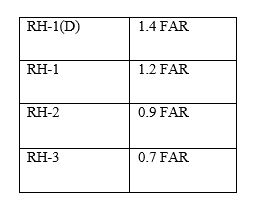Last week, RJR’s Matthew Visick wrote about Senate Bill (SB) 35—which streamlines the approval process for multi-family residential projects that include affordable housing in many urbanized cities. SB 35 was passed by the State Legislature earlier this month and is awaiting signature by the Governor. You can read that update here.
SB 167 is another pro-housing bill recently passed by the State Legislature and pending Governor Brown’s signature. The bill makes it more difficult for cities to deny or lower the density of housing projects that comply with zoning laws and general plan policies, and mandates sizable fines if cities fail to comply.
The bill would amend the Housing Accountability Act (the “Act”), which was enacted in 1982 and limits the discretionary authority of local agencies to deny housing projects, or to reduce the size and density of housing projects. If it becomes effective, SB 167 would give some teeth to the Act.
Under Section 65589.5(j) of the Act as it stands, if a housing project is consistent with applicable general plan and zoning standards in effect when the application is deemed complete, a city cannot disapprove the project or require that it be developed at a lesser density unless written findings show the project would have a “specific adverse impact on public health or safety,” and there is “no feasible method to satisfactorily mitigate or avoid the adverse impact” other than disapproval of the project or approval at a lower density.
Currently, those findings must be supported by “substantial evidence on the record.” SB 167 toughens this standard, requiring that the findings be based on “a preponderance of the evidence on the record.”
The bill mandates that if a local agency deems a housing proposal to be inconsistent, not in compliance, or not in conformity with an applicable plan, program, standard, policy, or ordinance, the agency must provide the applicant with written documentation explaining its determination. This provision should work to limit the extent to which agencies can arbitrarily conclude that projects are inconsistent with general plans and other local policies.
If the agency finds a housing development to be inconsistent with applicable policies, it must provide its written explanation within 30 or 60 days of the date the development application is determined to be complete—the 30 day deadline applies to projects proposing 150 units or less, and the 60 day deadline applies to projects proposing more than 150 units. If the local agency fails to provide this documentation, then the housing project will be “deemed consistent, compliant, and in conformity with the applicable plan, program, policy, ordinance, standard, requirement, or other similar provision.” Importantly, SB 167 clarifies that receipt of a density bonus under Section 65915 cannot be cited as the basis for finding a proposal inconsistent with applicable plans, ordinances, or standards.
The Act currently allows a project applicant, a housing organization, or a person who would be eligible for residency in the proposed project to bring an action to enforce the provisions of the Act. SB 167 would entitle a housing organization to collect attorney’s fees when it prevails in such an action.
The bill would further amend Section 65589.5(k) so that in an instance where a local agency disapproves a housing project that complies with applicable zoning standards or imposes a condition that the project be developed at a lesser density, without making the required findings, the court must issue a judgment compelling compliance with the Act within 60 days.
SB 167 also creates a new provision that requires the court to impose fines on a local agency that has violated the Act and failed to comply with a court order compelling compliance within 60 days. Under the new rules, the fine is set at a minimum of $10,000 per housing unit proposed on the date the project application was deemed complete under the Permit Streamlining Act. The fine must be paid into a local housing trust fund.
If a court’s order has not been carried out within 60 days, the new bill authorizes the court to go so far as to issue “an order to vacate the decision of the local agency and to approve the housing development project, in which case the application for the housing development project, as proposed by the applicant . . . shall be deemed approved unless the applicant consents to a different decision or action by the local agency.”
Much of SB 167’s strength lies in the authority it provides to the court. This means that sussing out how much impact these changes will have may depend on developers’ willingness to challenge local agency disapprovals or density reductions beyond the administrative level. Assuming Governor Brown signs the bill, as expected, only time will tell whether SB 167 will actually serve to bolster the Housing Accountability Act.
Authored by Reuben, Junius & Rose, LLP Associate, Chloe Angelis
The issues discussed in this update are not intended to be legal advice and no attorney-client relationship is established with the recipient. Readers should consult with legal counsel before relying on any of the information contained herein. Reuben, Junius & Rose, LLP is a full-service real estate law firm. We specialize in land use, development, and entitlement law. We also provide a wide range of transactional services, including leasing, acquisitions and sales, the formation of limited liability companies and other entities, lending/workout assistance, subdivision, and condominium work.












